7 Tips for Choosing the Best Dynamic Balancing System
What is Dynamic Balancing?
Dynamic balancing, or dynamic equilibration, is the process by which the vibration caused by an excess of mass in an area of the rotor that causes its center of mass to move away from its geometrical center is reduced.
There are 3 ways to evaluate good balancing:
- ISO-1940 Standard (quality grade in soft bearing suspensions)
- ISO-10816 Standard (by Machinery Classes)
- Residual unbalance (in g.mm/kg)
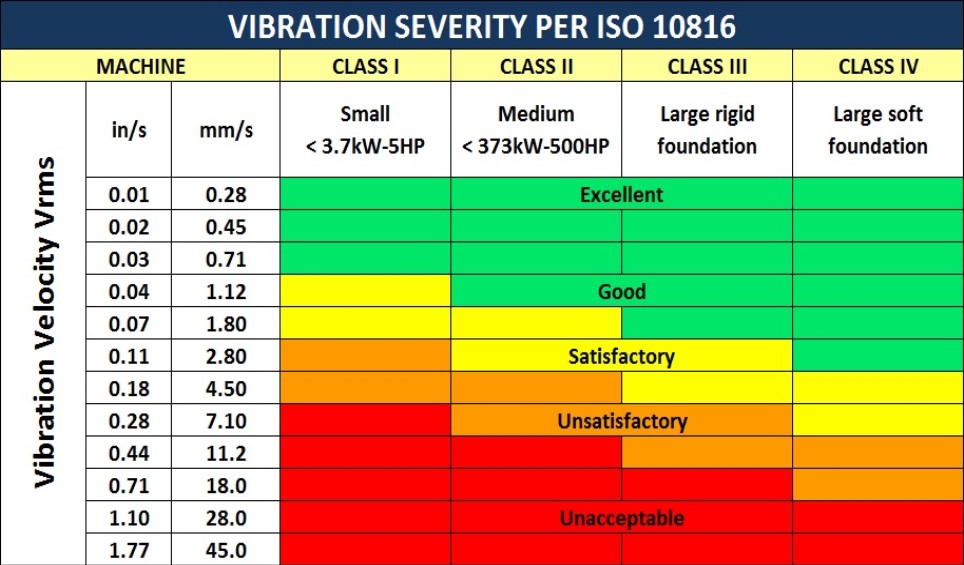
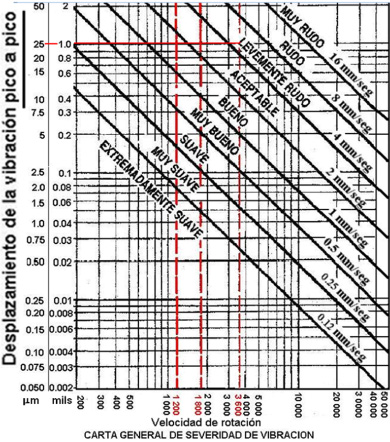
For this reason, the best industrial balancing system quickly solves the balancing problem and gives you a report with useful data and graphs. It also ensures good support from the manufacturer and its representatives in case of technical questions and need for spare parts in a short time.
When looking for a dynamic balancing equipment, consider two things. Whether you require simple equipment that provides only numerical values or if you also want to perform simple vibration analysis using the available graphical tools. Some brands of balancing equipment provide only numerical values while others show vibration signals over time and their FFT spectra.
Often, the price difference is minimal. This makes one to think that it is better to equip oneself with a more complete balancer that provides more tools. This is easy to understand because when you do a good job, you can easily expand the type of service provided from just balancing to analysis and balancing.
It is also useful to know if the balancing equipment is intended to be used to equip a workshop balancing machine or if your need is more for on-site field balancing services, or for both applications.
1. How Dynamic Balancing Accuracy Improves Machinery Performance:
Accuracy when balancing is crucial for the work to be fast and, above all, to achieve the degree of balance you are asking for. This will depend on at least 2 factors:
- Maximum recording time of the signal acquisition (the lower the rotation speed, the longer the recording time required).
- Resolution lines (see article on vibration analyzers)
A good resolution will help us to identify the vibration of 2 nearby machines rotating at very similar speeds.
2. Portability:
Consider whether the equipment is portable and easy to use, especially when using it near the machines. Often, long cables can be a hazard and get in the way. Currently, few manufacturers have the highly portable option offered by wireless sensors. These have the ability to work with cell phone apps, which ultimately do the same job as wired equipment. Such as the WiSER™ wireless sensors and the WiSER™ VIBE app for iOS and Android.
Compact equipment that requires little maintenance while being resistant to drops and environmental elements (dust and water) is preferable. If something is damaged, as can happen with a computer, reinstalling software on another device should be easy and cost-effective, ensuring minimal downtime and continued use.
3. Essential Features to Look for in a Dynamic Balancing System:
Most of the dynamic balancing systems propose simultaneous measurements of 2 or 4 channels, which speeds up the signal acquisition. But beware, some brands offer this as an option at additional cost.
For both experienced and beginners, it is good to have tools such as the balancing calculator to help, for example, to:
- Calculate the initial test weights.
Divide a counterweight into 2 positions. - Unify several weights into one to improve job presentation.
- Easily calculate hole diameter and depth to remove correction weight.
- Calculate the size of the plate to be welded.
- Calculate the new weight if the counterweight moves away from or towards the center.
- Balance without a tachometer.
- Tune the balance without repeating the entire procedure.
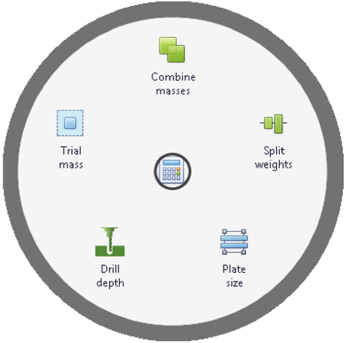
Another useful function is to have the facility to perform series balances in which, in a single run, correction weights can be determined without having to perform test runs. It is an excellent option that this process is easy to perform on on-site machinery as well as on workshop balancers.
4. Compatibility:
There are balancing equipment such as the DigivibeMX® M10 that are compatible with different types of sensors, such as the very common accelerometers, speedometers and proximity sensors.
When talking about compatibility, it is recommended that the balancing equipment can be configured in the way we know how to work. Both in the type of units used (metric or imperial), the way of measuring the angles to place the correction weights, and the position of the 0.
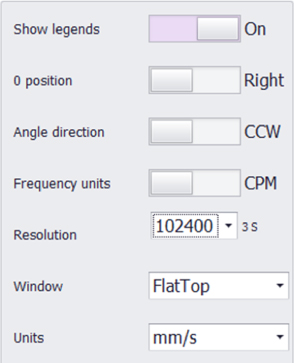
Within the more technical parameters, it is good to be able to select the framing, the resolution and the frequency or speed units that we want to use.
5. Reports:
Many teams can produce reports, but have you ever wondered if you can customize it with your company logo, or if you can add information that complements your work such as photos, text explanations, graphics, etc.?
The format plays an important role because if the report is generated in a file type that is not editable it causes more problems than solutions. Therefore, it is convenient to have a Word or Excel type format, and then convert it to PDF, for example.
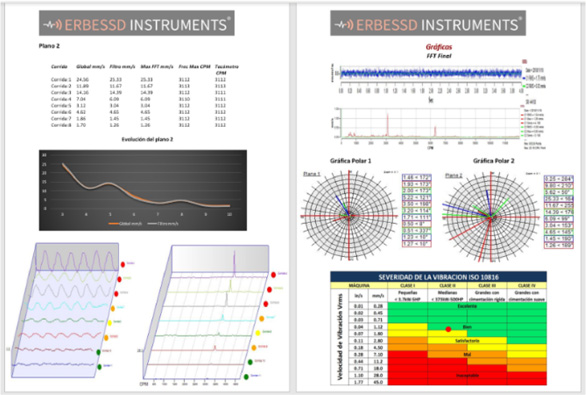
6. Understanding the Projected Image in Dynamic Balancing:
It is increasingly important to show customers that the equipment is user-friendly and meets image and functionality requirements.
The graphical interface, the ease of including additional information in the reports and the certainty that the work will have the expected quality. Is essential to make balancing an enjoyable and profitable activity.
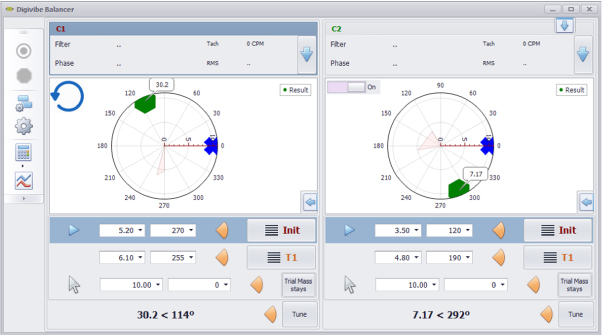
7. Spare Parts Availability and Pricing:
Have you ever wondered:
- How long will it take me to recover my investment?
- Who will use the equipment?
- Is the user careful or does it require a tough equipment?
The price of new equipment and licenses, as well as accessories and spare parts is a very important issue. There is equipment whose simple cost of licensing and maintenance service equals the cost of the equipment itself, and this recurs each year. It is important to make sure of these details and to see the feasibility of updating them every time they are required.
When equipment is discontinued, the question arises as to whether we will be able to obtain spare parts. What if a cable is damaged or where can I get a new sensor, and will it be compatible?
Few brands offer modular equipment that can be upgraded in parts without having to invest in all new equipment every time a critical part is damaged.
I invite you to review these points and compare between different brands. Of course, what better than a demonstration of the operation to better focus your decision? Ask about our DigivibeMX® options and we look forward to providing you with the most relevant information for your decision.
Thierry Erbessd, a prominent Mexican entrepreneur and graduate of the National Polytechnic Institute, has revolutionized the field of Vibration Analysis, Dynamic Balancing, and Condition Monitoring. Through his innovative software DigivibeMX®, Dragon Vision®, and Wiser Vibe®, he has set a before and after in the industry. As president of Erbessd Instruments®, he has not only led the company to the top of the global industrial maintenance industry but has also expanded its influence with strategically located offices in America, Europe, and Asia, establishing himself as an undisputed reference in industrial maintenance solutions worldwide.
ERBESSD INSTRUMENTS®, a leading manufacturer of Vibration Analysis Equipment, Dynamic Balancing Machines, and Condition Monitoring with offices in Mexico, the USA, England, and India








